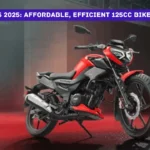When it comes to the world of maxi-scooters, the Yamaha NMax 155 is a name that stands out. With its stylish looks and powerful performance, it competes head-to-head with the Honda PCX 160. In this blog post, we’ll dive into the features of the Yamaha NMax 155 and see how it stacks up against its Honda rival.
Design: Sporty vs. Elegant
The design of a scooter can make or break its appeal, and both the Yamaha NMax 155 and the Honda PCX 160 have their unique styles. The NMax boasts an aggressive and sporty design, characterized by its angular front headlamp and sleek rear. It reminds you of Yamaha’s larger models like the XMax, making it look quite dynamic on the road.
On the other hand, the Honda PCX 160 takes a more elegant approach. Its sleek front headlamp and signature ‘X’ silhouette give it a futuristic look. Depending on your aesthetic preference, you might lean towards one or the other. Personally, I find the NMax’s sporty vibe more appealing, especially for urban commuting.
Engine and Performance: Power Play
Performance is crucial when choosing a scooter, and here’s how these two contenders compare:
| Feature | Yamaha NMax 155 | Honda PCX 160 |
|---|---|---|
| Engine Displacement | 155cc | 156.9cc |
| Power Output | 15.1 hp at 8,000 rpm | 15.8 hp at 8,500 rpm |
| Torque | 13.9 Nm at 6,500 rpm | 15 Nm at 6,500 rpm |
| Fuel Efficiency | ~45.5 km/l | ~53 km/l |
From this table, it’s clear that the Honda PCX 160 has a slight edge in power and torque, but the Yamaha NMax 155 isn’t far behind. I’ve experienced both, and while the NMax feels zippy and responsive, the PCX offers a bit more oomph during acceleration.
Features That Matter
Features can elevate a scooter from good to great. Here’s a breakdown of what each model has to offer:
- Yamaha NMax 155:
- Dual-channel ABS for enhanced safety.
- Traction Control System (TCS) to prevent wheel slip.
- Smart Key System for keyless operation.
- Y-Connect for smartphone connectivity, allowing you to track maintenance reminders and fuel consumption.
- Honda PCX 160:
- Single-channel ABS on the front wheel.
- Honda Selectable Torque Control (HSTC) to prevent rear wheel slip.
- Idling Stop System (ISS) for better fuel efficiency.
- Full LED lighting for improved visibility.
For tech enthusiasts, the Yamaha NMax 155’s Y-Connect feature is a game-changer. It’s not just about riding; it’s about staying connected. Personally, I love being able to monitor my scooter’s performance via my smartphone.
Pricing: Worth the Investment?
Let’s talk about the price. The Yamaha NMax 155 is priced at around Rp 34,300,000 for the Connected ABS variant, while the Honda PCX 160 comes in slightly higher at approximately Rp 34,445,000 for the ABS variant. While the price difference isn’t huge, it might influence your decision based on budget and features.
In my opinion, if you value advanced safety features and connectivity, the NMax is worth it. However, if you prefer a slightly more powerful engine and better fuel efficiency, the PCX might be the better choice.
Final Thoughts
Both the Yamaha NMax 155 and the Honda PCX 160 offer compelling features and performance. The NMax stands out with its advanced safety features like dual-channel ABS and TCS, along with smartphone connectivity through Y-Connect. On the other hand, the PCX 160 offers a slightly more powerful engine and additional features like HSTC and ISS.
Your choice may ultimately depend on what features align more closely with your riding style and preferences. Whether you lean towards the sporty design of the NMax or the elegant look of the PCX, you can’t go wrong with either choice. Happy riding!






